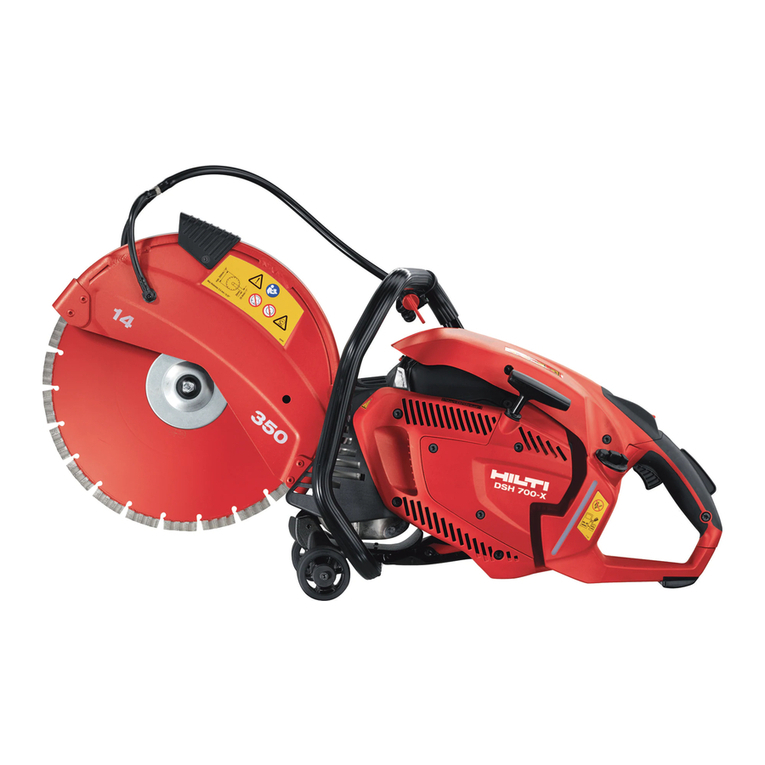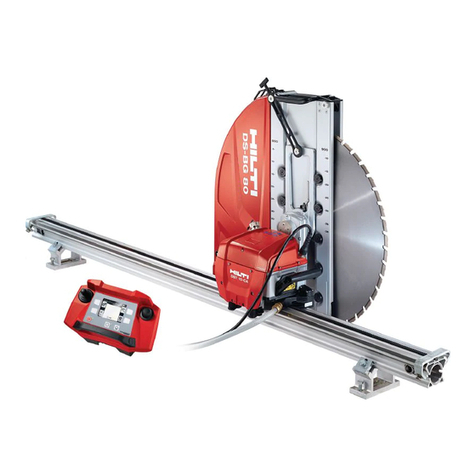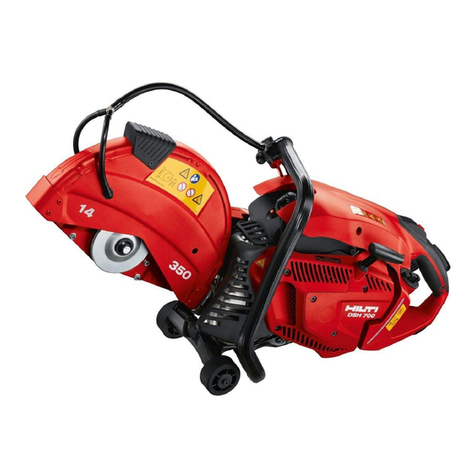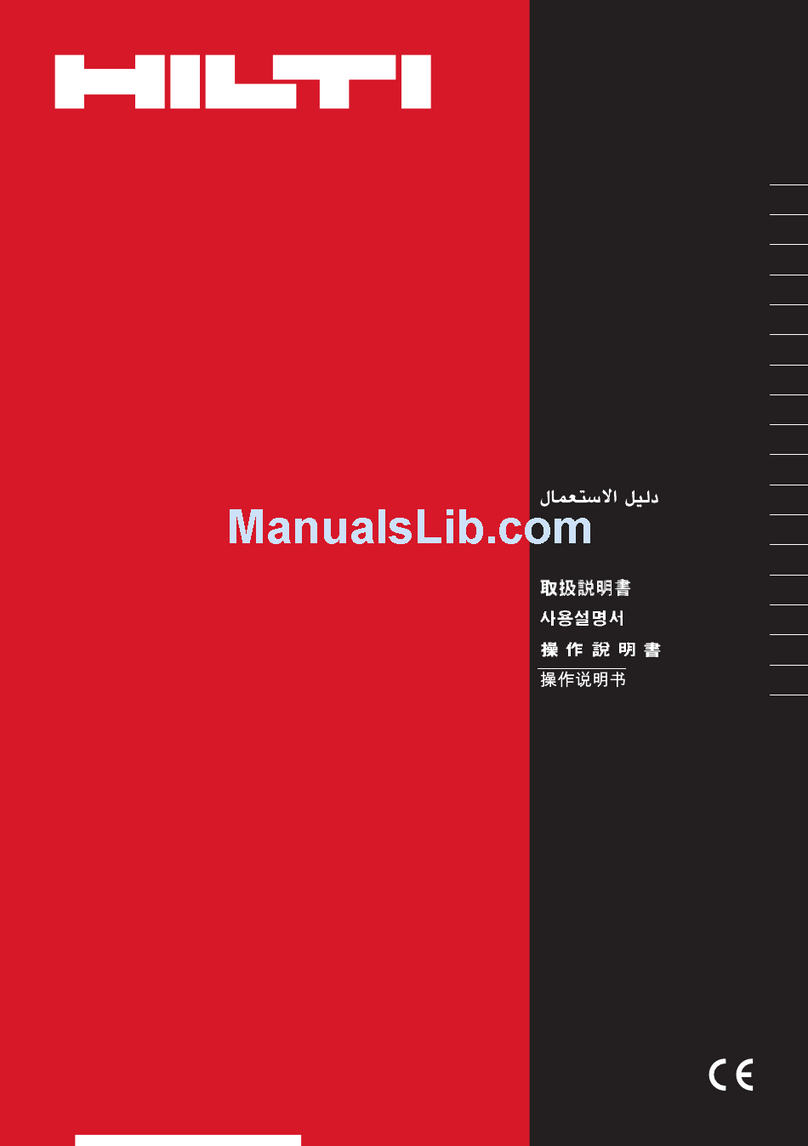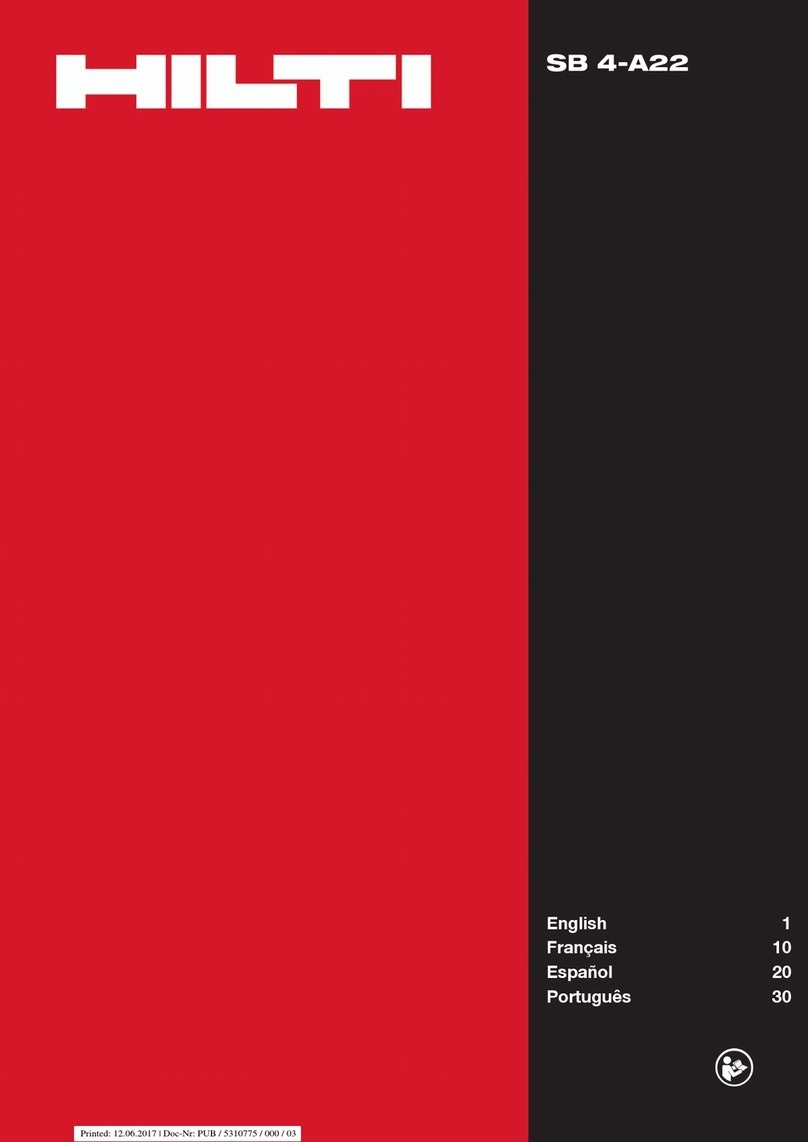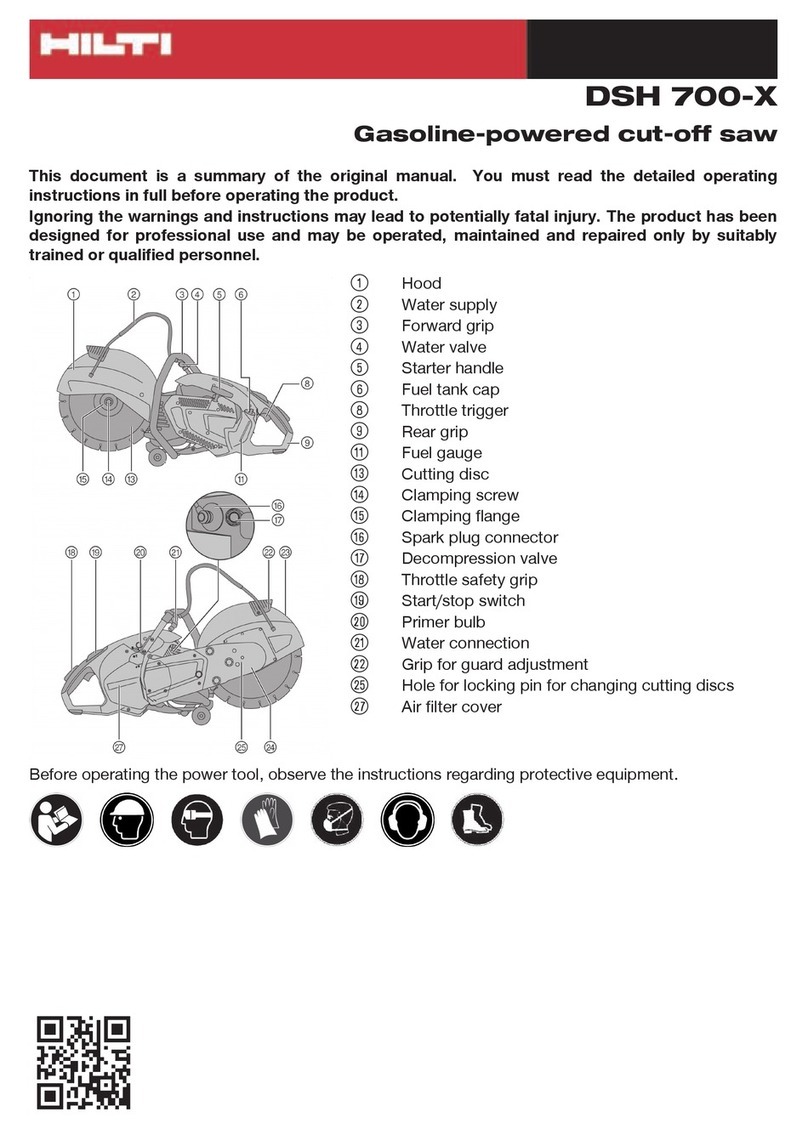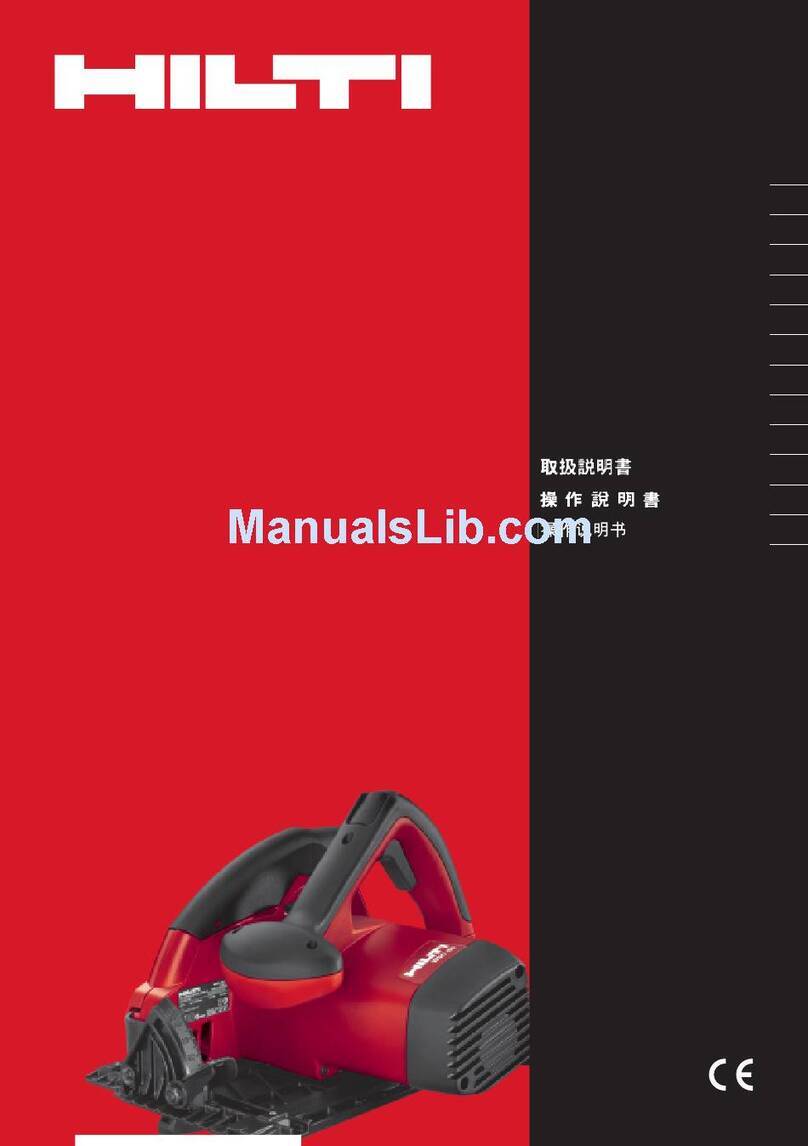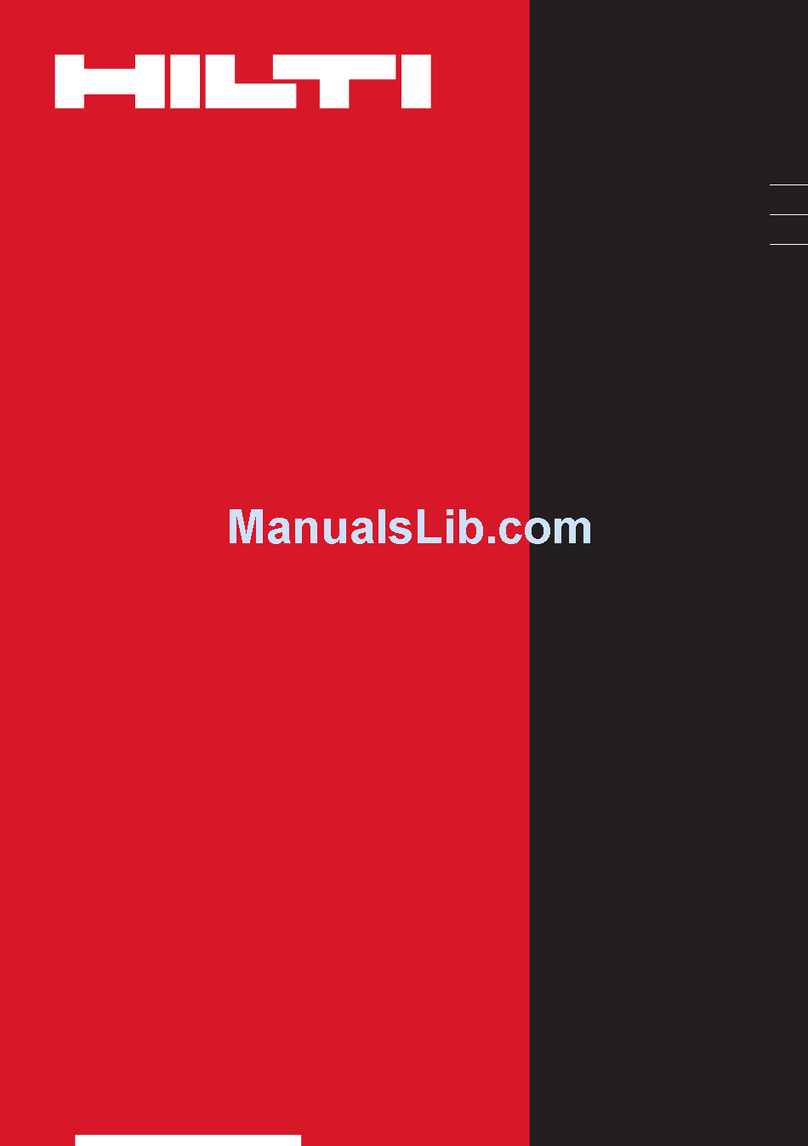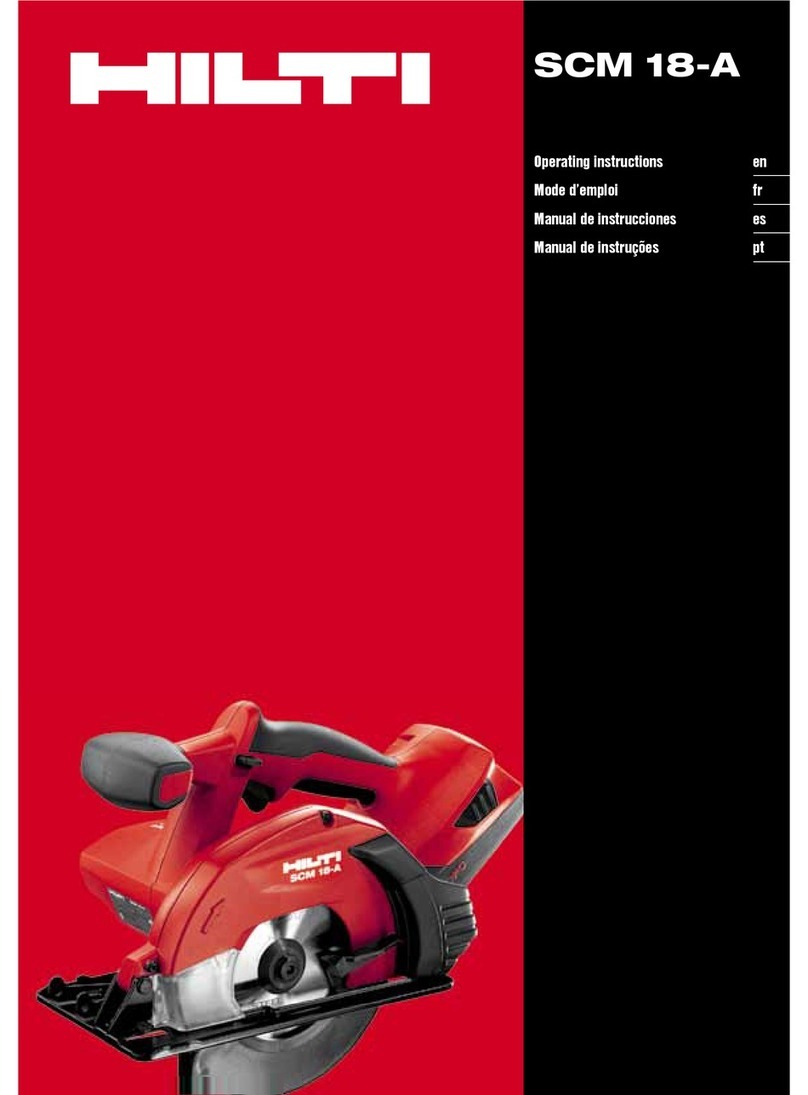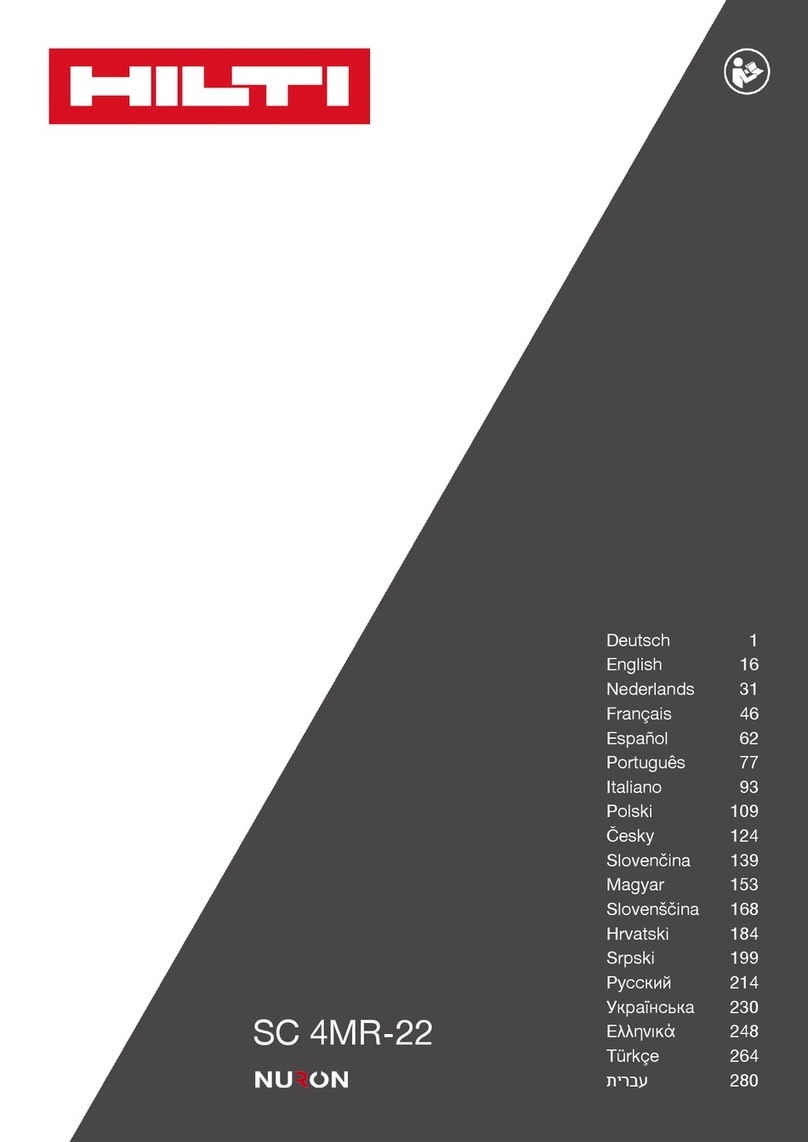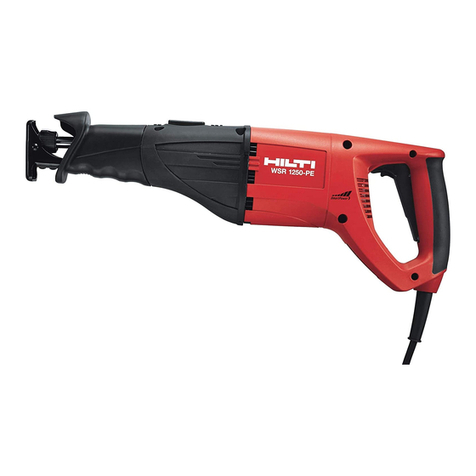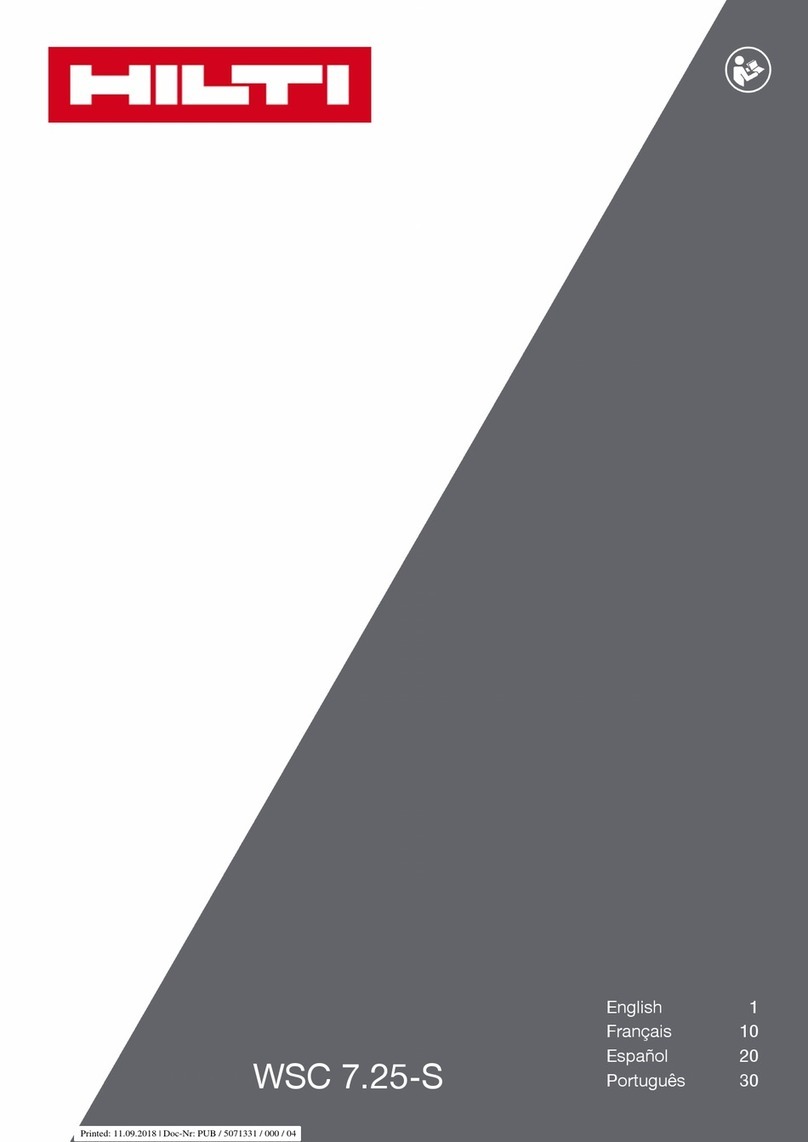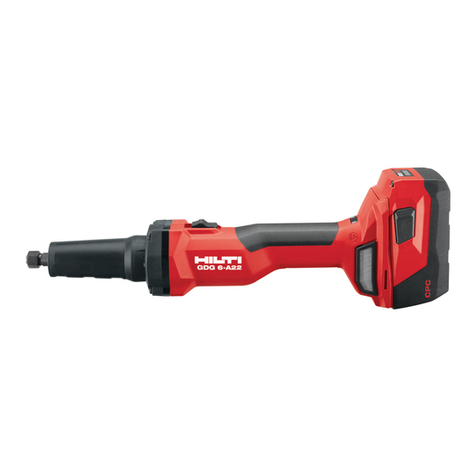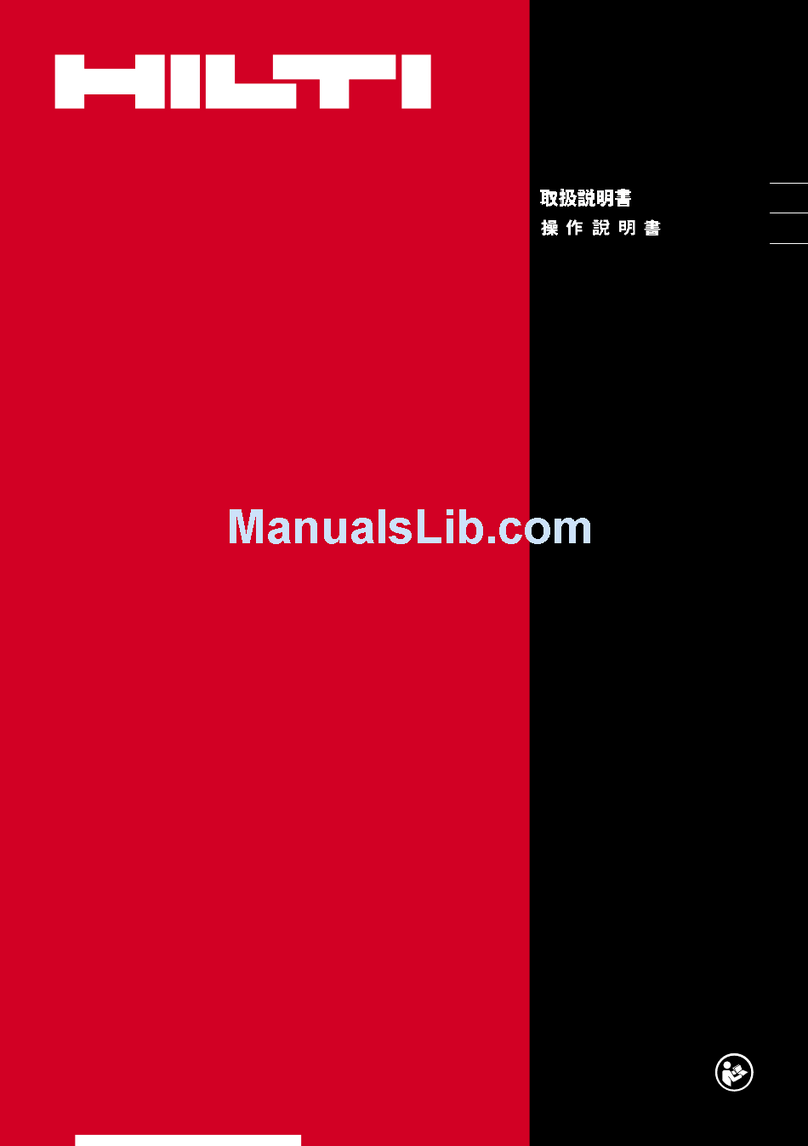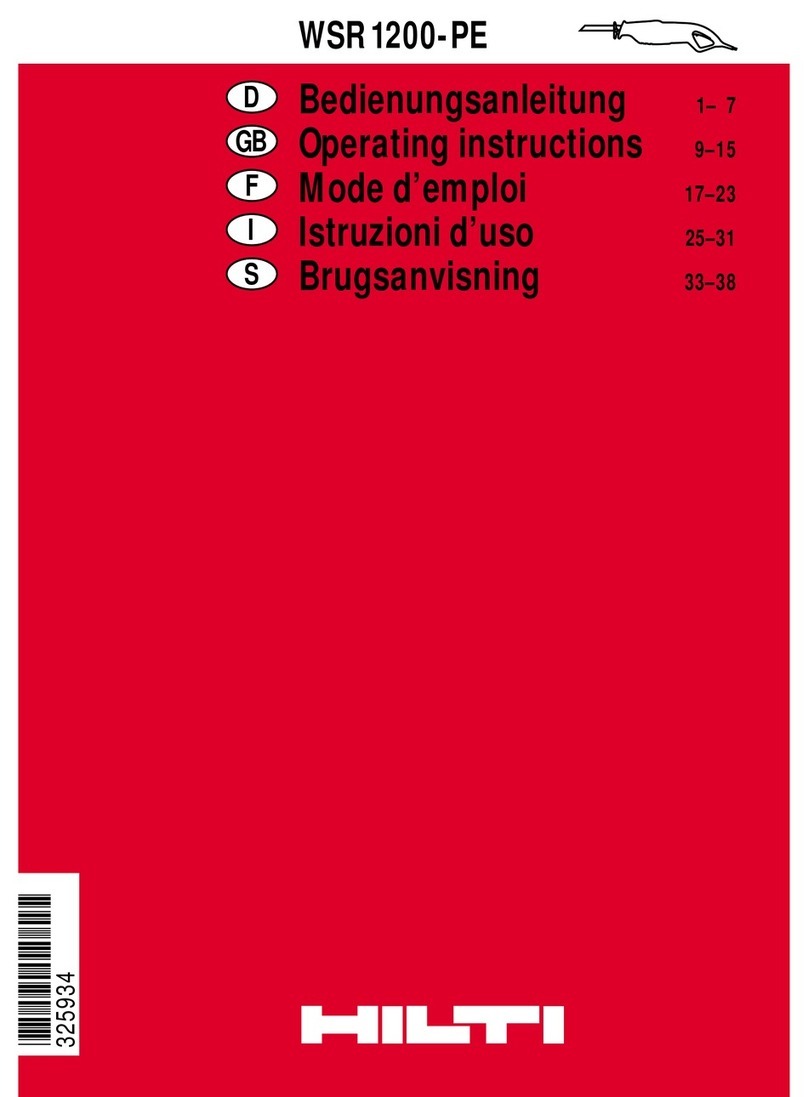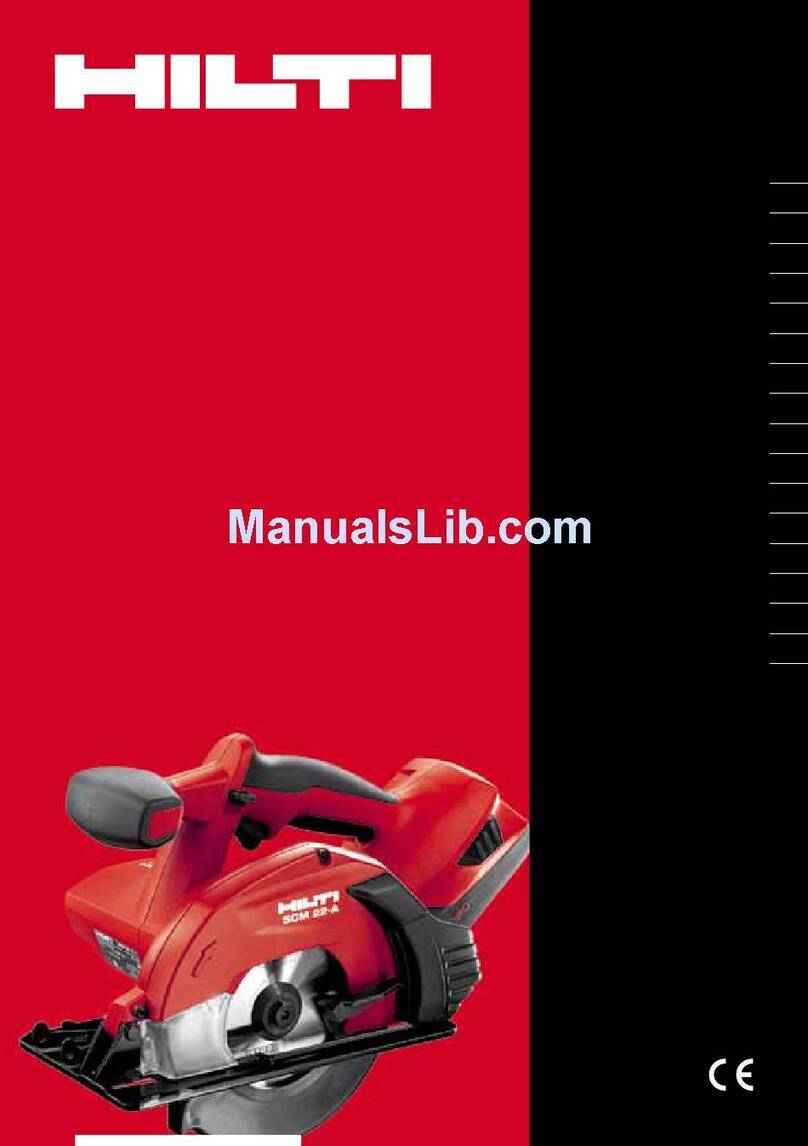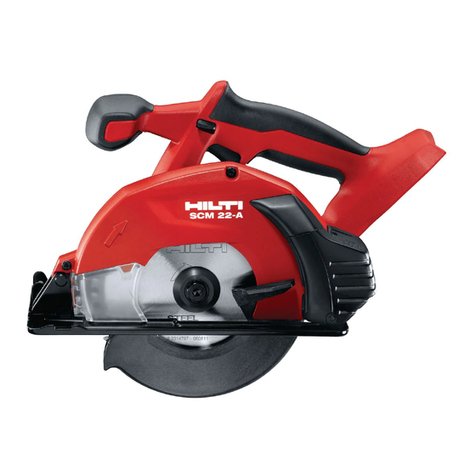
2. Description
2.1 Use of the product as directed
The machine is intended for hand-held or walk-behind
use for dry or wet cutting of asphalt and mineral
or metallic construction materials using abrasive or
diamond cutting discs.
To reduce the amount of dust produced when cutting,
we recommend use of the wet cutting method.
The working environment may be as follows: con-
struction site, workshop, renovation, conversion or
new construction.
To avoid the risk of injury, use only genuine Hilti
accessories and cutting tools.
Observe the safety rules and operating instructions
for the accessories used.
Working on materials hazardous to the health (e.g.
asbestos) is not permissible.
Observe the information printed in the operating in-
structions concerning operation, care and mainten-
ance.
Nationally applicable industrial safety regulations
must be observed.
The machine is designed for professional use and
may be operated, serviced and maintained only by
trained, authorized personnel. This personnel must
be informed of any special hazards that may be en-
countered. The machine and its ancillary equipment
may present hazards when used incorrectly by un-
trained personnel or when used not as directed.
Take the influences of the surrounding area into
account. Do not use the power tool or appliance
where there is a risk of fire or explosion.
Modification of the machine or tampering with its
parts is not permissible.
Don’t work in closed, poorly ventilated rooms.
2.2 Items supplied as standard
1 Machine
1 DSH tool set
1 Operating instructions
1 DSH consumables kit
2.3 Abrasive cutting discs for hand-guided
gasoline-powered cut-off saws
Abrasive cutting discs for gasoline-powered cut-off
saws are composed of synthetic resin-bonded ab-
rasive granulate. These cutting discs feature fabric
or fiber reinforcement which improves their strength,
toughness and breakage resistance.
NOTE
Abrasive cutting discs for gasoline-powered cut-off
saws are used mainly for cutting ferrous and non-
ferrous metals.
NOTE
Various grit types such as aluminum oxide, silicon
carbide, zirconium, etc., with a different bonding
material (matrix) or matrix hardness, are available
depending on the construction material to be cut.
2.4 Diamond cutting discs for hand-guided
gasoline-powered cut-off saws
Diamond cutting discs for gasoline-powered cut-off
saws consist of a steel core (disc) with diamond
segments (metallically bonded industrial diamonds).
NOTE
Segmented diamond cutting discs or those with a
continuous cutting face are mainly used for cutting
asphalt and mineral construction materials.
2.5 Cutting disc specifications
Diamond cutting discs in compliance with the require-
ments of EN 13236 are to be used with the machine.
Synthetic resin-bonded fiber-reinforced cutting discs
in compliance with EN 12413 (straight, not offset,
type 41) may also be used with this machine for
working on metals. The mounting instructions and
instructions for use issued by the disc manufacturer
must also be observed.
2.6 Recommendations for use
We recommend that the workpiece is not cut through
in a single operation. Advance to the required depth
of cut by making several to-and-fro movements.
To avoid damaging the diamond cutting disc when
dry cutting, lift the blade out of the cut for approx. 10
seconds every 30 to 60 seconds while the machine is
still running.
To reduce the amount of dust produced when cutting,
we recommend use of the wet cutting method.
en
3
Printed: 07.07.2013 | Doc-Nr: PUB / 5069783 / 000 / 00
